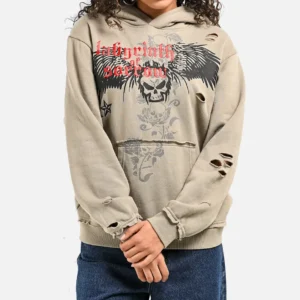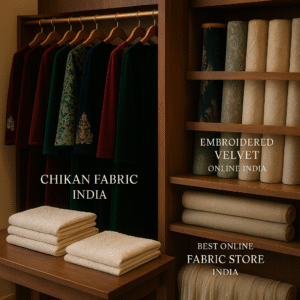In today’s fast-paced e-commerce and retail environment, product packaging has evolved into more than just a means of transportation. It has become an extension of a brand’s image, a critical component of customer satisfaction, and a vital factor in maintaining product integrity. Custom shipping boxes have emerged as essential tools for businesses of all sizes, helping them deliver their products securely, professionally, and with style. These boxes are uniquely designed to align with the specific needs of businesses and the expectations of their customers, from logistics to presentation.
As the first physical interaction between a brand and its customer, a shipping box offers a rare opportunity to make a lasting impression. With custom designs, materials, sizes, and prints, businesses can transform a simple delivery into a branded experience that increases customer retention, protects goods during transit, and promotes sustainability.
The Role of Shipping Boxes in the Modern Supply Chain
Shipping boxes have always served a functional role in the supply chain, primarily to protect products from damage during transport. However, with the exponential growth of e-commerce and increased consumer expectations, their role has expanded significantly. They are no longer just carriers—they are communicators, guardians, and marketers.
Custom shipping boxes ensure that each product fits securely within a container that matches its shape and fragility. This precise fit reduces movement during shipping, lowering the chances of damage. At the same time, custom boxes allow businesses to communicate important messages, such as brand values, instructions, and sustainability efforts, directly to the end user.
As part of a well-managed logistics system, these boxes contribute to operational efficiency. Correctly sized boxes reduce packaging waste, optimize storage space, and decrease shipping costs due to lower dimensional weight.
Understanding Customization in Shipping Boxes
Customization extends far beyond slapping a logo on a cardboard box. Businesses can personalize virtually every element of a shipping box, from its size and shape to its color, structure, and internal cushioning. This level of customization ensures that the box meets the unique requirements of both the product and the brand.
The dimensions of a custom box can be tailored precisely to fit the product it carries. This avoids overuse of fillers like bubble wrap or foam and enhances both safety and sustainability. Different box styles—such as mailer boxes, corrugated cartons, or folding cartons—can be used depending on the nature of the product and the desired unboxing experience.
Custom printing adds another layer of value. Businesses can print branded elements, care instructions, contact information, promotional messages, or even QR codes that lead to websites or digital content. With full-color, inside-and-outside printing options, brands have a full canvas to engage customers and reinforce brand identity.
Materials Used in Custom Shipping Boxes
The choice of material in shipping boxes significantly impacts durability, weight, cost, and sustainability. Corrugated cardboard is the most common material used for shipping boxes due to its strength, lightweight nature, and recyclability. It is made of a fluted inner layer sandwiched between two flat linerboards, offering protection against crushing and impact.
Kraft corrugated boxes offer a more natural, eco-friendly appearance. They are made from unbleached pulp and are biodegradable, making them ideal for brands emphasizing sustainability. White corrugated boxes, on the other hand, provide a clean, premium look that is better suited for detailed and colorful printing.
Rigid boxes and chipboard may be used for shipping higher-end goods, especially when presentation is a key factor. These materials are thicker and more luxurious but less common in mass shipping due to higher costs.
Material thickness can be adjusted to suit the weight and fragility of the contents. Single-wall corrugated boxes suffice for lightweight items, while double-wall and triple-wall constructions are ideal for heavier or more fragile products.
Custom Inserts and Protective Elements
Shipping fragile or irregular-shaped items often requires more than a basic box. Custom inserts such as die-cut cardboard, molded pulp, foam, or corrugated dividers are essential to prevent internal movement and cushion the product. These inserts can be tailored to snugly fit the product’s contours, reducing the risk of breakage and minimizing the need for plastic fillers.
Custom inserts also offer a sleek presentation. When customers open the box to find a perfectly fitted interior that holds the product securely in place, the experience feels intentional and premium. These elements are particularly important for electronics, glassware, cosmetics, and luxury goods, where first impressions carry weight.
In addition to inserts, custom shipping boxes can feature tamper-evident seals, reinforced corners, or water-resistant coatings for added protection. These enhancements show customers that their purchase has been handled with care and foresight, building trust and credibility.
Branding Opportunities with Custom Shipping Boxes
A custom shipping box is essentially a mobile advertisement. From the moment it leaves the warehouse until it arrives at the customer’s doorstep, it passes through numerous hands and locations. Leveraging this visibility, businesses can turn plain brown packaging into a storytelling platform.
High-quality printing allows for vibrant colors, sharp logos, and creative patterns that reflect brand personality. Minimalist designs convey sophistication, while playful graphics suggest creativity and fun. Even subtle elements like printed tape, branded labels, or interior messaging can contribute to a coherent and memorable brand experience.
Branding through custom shipping boxes not only improves aesthetics but also fosters emotional connections with customers. A well-designed box can spark excitement and anticipation, especially in subscription-based businesses where monthly deliveries are eagerly awaited. Such packaging can drive social sharing as customers post their unboxing experiences online, essentially offering free word-of-mouth marketing.
Sustainable Packaging and Consumer Expectations
Environmental responsibility has become a deciding factor in purchasing decisions for many consumers. Custom shipping boxes play a critical role in a brand’s sustainability efforts. By choosing recyclable, biodegradable, or compostable materials and minimizing waste, companies demonstrate environmental awareness.
Kraft corrugated boxes, made from recycled content, are a popular choice among eco-conscious brands. Water-based inks and soy-based inks reduce chemical runoff during printing, while right-sized boxes eliminate the need for excessive filler materials.
Designing boxes that are easy to recycle—such as those with no lamination, glue, or plastic windows—makes disposal simple and responsible for customers. Communicating these sustainability features on the box itself can encourage customers to make environmentally friendly choices and strengthen brand trust.
Enhancing the Customer Experience Through Packaging
Packaging is often the first physical touchpoint customers have with a brand, especially in e-commerce. As such, the unboxing experience is an opportunity to delight and impress. Custom shipping boxes contribute to this experience by being visually appealing, easy to open, and thoughtfully designed.
A seamless unboxing process can include features like tear strips, pull tabs, and resealable closures. These make it easy for the customer to access the contents without damaging the box, which is especially helpful for returns.
Printed interiors, branded tissue paper, and thank-you cards are small additions that make a big impact. They show attention to detail and convey appreciation for the customer. Personalized touches such as the customer’s name, promotional codes, or product tips create an emotional connection that fosters loyalty and repeat business.
Cost Efficiency and Long-Term Savings
While custom shipping boxes may require an initial investment compared to generic packaging, they offer significant long-term benefits. Right-sized packaging reduces material usage and shipping costs. Less void space means fewer fillers and lighter packages, which translate into lower shipping fees.
Reduced product damage during transit decreases the cost of replacements, refunds, and customer dissatisfaction. Branded boxes reduce the need for additional marketing materials, as the packaging itself serves as a promotional tool.
High-quality packaging also adds perceived value to a product, allowing businesses to command premium prices. When customers associate your brand with care, quality, and presentation, they are more likely to return and recommend your services to others.
Versatility Across Industries
Custom shipping boxes are used in nearly every industry. E-commerce retailers rely on them to ship fashion items, electronics, beauty products, and household goods. Subscription services use them to package monthly assortments with excitement and flair.
The food and beverage industry uses custom boxes to ship perishable goods with thermal insulation and moisture barriers. Pharmaceutical companies use tamper-evident boxes to deliver medication safely. Industrial suppliers use reinforced boxes to protect heavy machinery parts during transport.
Because they are highly versatile, these boxes can be adapted to any brand’s specific requirements, whether it involves branding, durability, compliance, or temperature control.
Choosing the Right Packaging Partner
The success of your custom shipping box project depends on the capabilities and reliability of your packaging supplier. An experienced provider offers not only manufacturing but also design consultation, prototyping, and logistics support.
They can help you choose the right materials, box style, insert types, and printing options based on your product and brand goals. Prototyping services allow you to test the box’s fit and durability before committing to large-scale production.
Working with a partner that provides quick turnaround, consistent quality, and flexible order volumes ensures that your packaging operation runs smoothly. Local manufacturing may also reduce lead times and environmental impact compared to international sourcing.
Trends in Custom Shipping Boxes
The packaging industry is evolving to keep up with consumer preferences and technological advancements. Trends include smart packaging features like NFC tags or QR codes that provide digital interactivity, such as product tracking, usage instructions, or loyalty programs.
Minimalist design continues to be popular, focusing on clean lines and subtle branding. Monochromatic prints and natural textures create an organic, modern look that appeals to younger audiences.
Sustainable innovation is also driving the use of plant-based materials, mushroom foam inserts, and reusable box designs. Companies are increasingly exploring circular packaging solutions that reduce waste and encourage reuse.
Conclusion: Elevating Your Brand with Custom Shipping Boxes
Custom boxes are far more than protective containers. They are dynamic tools that combine safety, branding, sustainability, and customer experience. From the choice of materials to the layout of inserts, every detail contributes to how your brand is perceived and remembered.
Whether you’re an emerging e-commerce business or an established retailer, investing in custom shipping boxes is a strategic move. It helps reduce costs, boost customer satisfaction, and reinforce your brand identity at every delivery.
With thoughtful design and reliable execution, custom shipping boxes can transform every shipment into a professional and memorable brand encounter—making the ordinary extraordinary, one box at a time.


